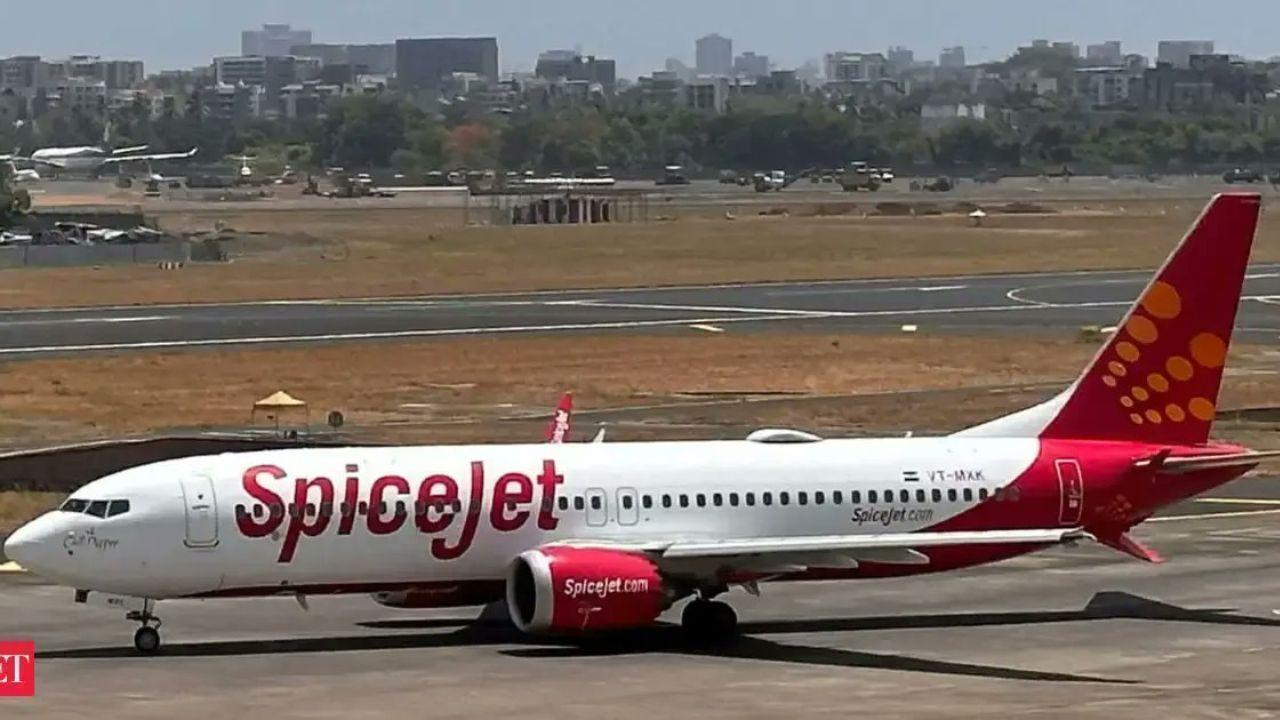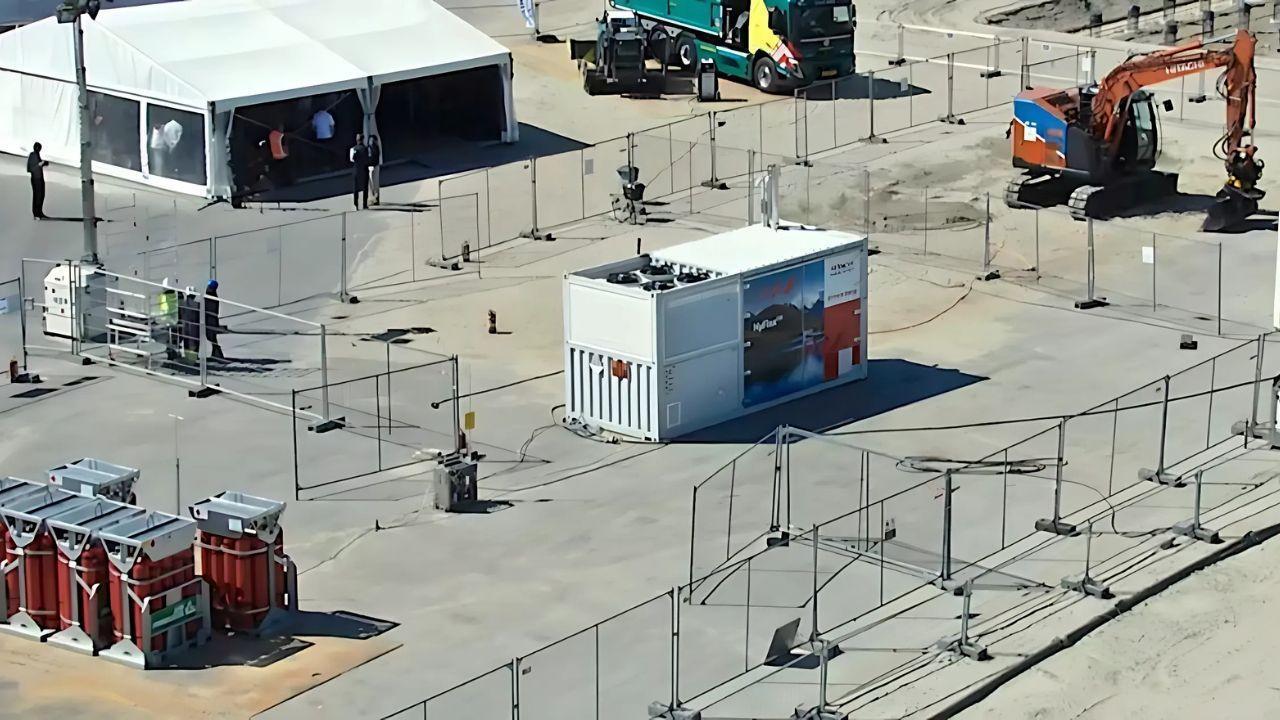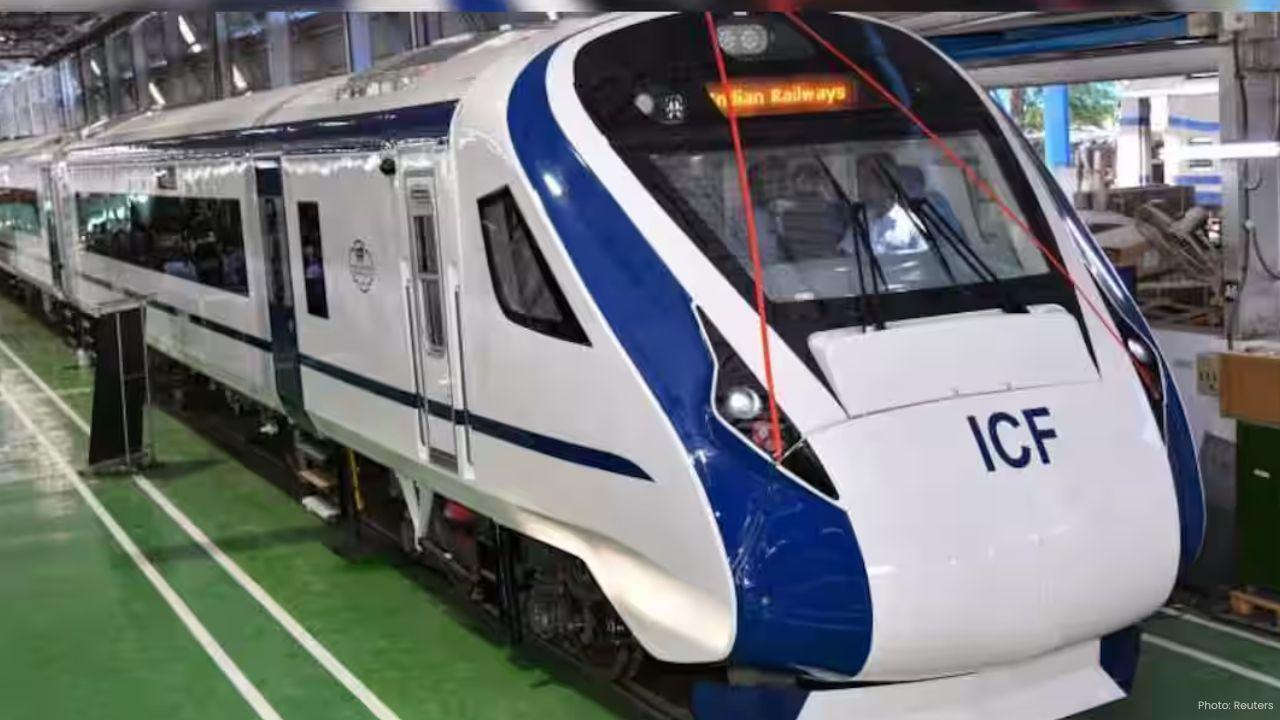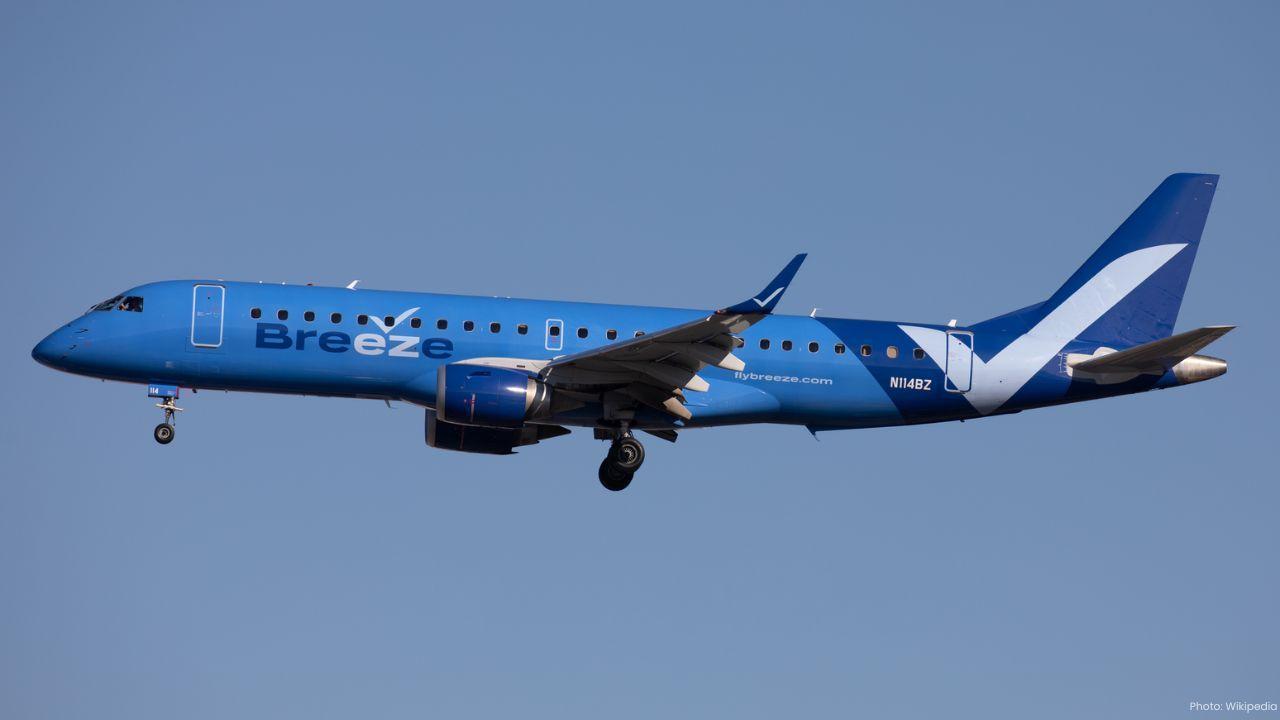
Post by : Avinab Raana
Photo : X / Economic Times
Strategic Fleet Expansion Underway
SpiceJet, India’s budget carrier, is set to return approximately ten grounded aircraft to active service by April 2026, a move signaling a significant step in its operational recovery. The airline plans to phase the reactivations, with four to five aircraft coming online in early winter to accommodate peak travel periods. This decision reflects a broader strategy to bolster capacity, reduce operational bottlenecks, and align the fleet with growing market demand.
Addressing Grounded Aircraft Challenges
A portion of SpiceJet’s fleet has been grounded for various operational and maintenance reasons. While these aircraft have contributed to cost pressures, including lease and maintenance obligations, their reactivation represents a carefully managed effort to bring them back safely and efficiently into service. By systematically preparing each aircraft, the airline ensures reliability, safety, and performance standards are fully met before they rejoin operations.
Phased Engine Overhaul and Maintenance
Central to the reactivation process is the comprehensive overhaul and maintenance of aircraft engines. SpiceJet has arranged for engines to undergo repair and testing in specialized facilities, ensuring they meet stringent performance and safety benchmarks. This phased approach allows the airline to sequentially restore aircraft to operational readiness while minimizing disruptions to daily schedules. Each returned engine undergoes rigorous testing to ensure it can reliably handle the demands of commercial service.
Expanding Winter and Summer Capacity
The timing of the phased reactivation aligns with the airline’s seasonal strategy. Bringing several aircraft back online in early winter ensures the airline can meet high passenger demand during peak travel periods. Subsequent additions by April 2026 will further strengthen capacity ahead of the early summer season, providing flexibility to handle both domestic and international traffic surges.
Leasing Agreements to Supplement the Fleet
In addition to reactivating existing aircraft, SpiceJet has finalized lease agreements to add ten Boeing 737s to its fleet. These aircraft will enter service under short-term leasing arrangements, complementing reactivated aircraft and expanding operational capacity. This proactive approach addresses anticipated growth in passenger volumes and enables the airline to offer increased flight options, particularly on high-traffic routes.
Operational Efficiency and Maintenance Strategy
SpiceJet’s strategy emphasizes operational efficiency. By synchronizing aircraft maintenance, engine overhauls, and crew training, the airline aims to minimize turnaround times while maximizing aircraft availability. Predictive maintenance tools and structured inspection schedules ensure that aircraft are kept at peak readiness, reducing unscheduled disruptions and improving reliability across the network.
Financial Considerations and Recovery
The phased reactivation plan also reflects careful financial planning. By spreading reactivation costs over multiple months and supplementing capacity through leased aircraft, the airline balances operational growth with financial prudence. These measures allow SpiceJet to recover steadily from previous periods of reduced fleet utilization, maintain liquidity, and support long-term growth ambitions.
Workforce Training and Preparedness
Crew readiness is central to SpiceJet’s fleet expansion. Pilots, cabin crew, and maintenance personnel undergo specialized training to familiarize themselves with reactivated aircraft, updated systems, and new operational protocols. This training ensures that safety, service quality, and operational performance are maintained at the highest standards, reinforcing passenger confidence.
Enhancing Passenger Experience
SpiceJet’s fleet expansion directly benefits passengers. Increased aircraft availability allows for more flight options, improved on-time performance, and greater connectivity across domestic and international routes. The airline’s commitment to service quality, combined with operational reliability, strengthens its position as a trusted choice for travelers seeking affordability without compromising safety.
Safety as a Cornerstone of Reactivation
Every aircraft undergoing reactivation is subject to stringent safety checks. SpiceJet’s maintenance teams perform detailed inspections of structural integrity, avionics, engines, and critical systems. This rigorous process ensures that each aircraft meets regulatory requirements and is fully equipped to operate under demanding commercial conditions. Safety remains the non-negotiable foundation of the airline’s operational strategy.
Integration With Fleet Modernization Plans
The reactivation program complements SpiceJet’s broader fleet modernization efforts. Older aircraft are gradually replaced or upgraded, while reactivated planes undergo refurbishments to enhance comfort, performance, and operational efficiency. The combined effect is a more capable and versatile fleet that supports both current operations and long-term expansion goals.
Strategic Focus on High-Demand Routes
SpiceJet is prioritizing the deployment of reactivated aircraft on high-demand domestic and regional routes. By aligning fleet capacity with market demand, the airline maximizes revenue potential while improving passenger convenience. Seasonal scheduling adjustments ensure that aircraft are deployed where they are most needed, optimizing fleet utilization and operational efficiency.
Building Resilience Against Market Volatility
The combination of reactivation and leasing provides a flexible framework to respond to market fluctuations. Should passenger demand spike or route requirements change, SpiceJet can adjust aircraft deployment without major disruptions. This operational resilience enhances the airline’s ability to maintain service levels during unexpected challenges, from geopolitical tensions to fluctuating travel patterns.
Strengthening Competitive Position
SpiceJet’s fleet expansion enhances its competitive position in the Indian aviation market. With additional aircraft, the airline can increase frequency on popular routes, introduce new destinations, and respond effectively to competitor actions. A larger, reliable fleet reinforces customer confidence and supports the airline’s brand promise of affordable, efficient air travel.
Operational Coordination and Fleet Management
Coordinating the reactivation of multiple aircraft requires meticulous planning. Maintenance schedules, engine deliveries, crew rotations, and operational slots are carefully aligned to avoid bottlenecks. This holistic approach ensures a smooth transition from grounded to active status, maintaining consistency in flight operations and minimizing passenger disruption.
Emphasis on Regulatory Compliance
All reactivated aircraft comply with aviation regulatory standards. SpiceJet works closely with aviation authorities to ensure inspections, certifications, and documentation are completed prior to flight operations. Compliance not only guarantees safety but also reassures passengers and stakeholders that all operational practices meet stringent industry benchmarks.
Leveraging Technology for Operational Readiness
Advanced digital tools aid SpiceJet in monitoring fleet performance, tracking maintenance requirements, and planning crew rotations. Predictive analytics allow the airline to anticipate potential issues before they affect operations, ensuring a higher level of reliability for passengers and greater efficiency for airline management.
Managing Cost-Effectiveness and Efficiency
By carefully phasing aircraft reactivation and supplementing with leased planes, SpiceJet maintains cost-effective operations. This approach avoids unnecessary financial strain while enabling strategic growth. Efficient allocation of resources ensures that each aircraft contributes effectively to capacity, revenue generation, and passenger service quality.
Preparing for Peak Travel Seasons
The timing of the fleet reactivation aligns with expected increases in travel demand during winter and early summer periods. By strategically returning aircraft to service in stages, SpiceJet ensures that its capacity is scaled appropriately to meet seasonal passenger loads without overextending operational resources.
Strengthening Brand Reputation
Successfully executing this fleet expansion enhances SpiceJet’s reputation as a resilient and adaptive airline. Passengers perceive reliability, availability, and service quality as core benefits, reinforcing the airline’s competitive advantage. Demonstrating operational strength during peak travel periods builds trust and encourages repeat patronage.
Long-Term Vision for Fleet Expansion
SpiceJet’s current reactivation plan is part of a long-term vision to expand its fleet to approximately 100 aircraft by 2026. This growth supports the airline’s strategy to replace older models, enhance fuel efficiency, and increase route coverage. The reactivation initiative represents a tangible first step in achieving these long-term operational goals.
Supporting Economic and Market Recovery
A revitalized fleet allows SpiceJet to contribute meaningfully to economic and market recovery. By offering more flights, supporting tourism, and connecting business hubs, the airline strengthens its role as a key player in India’s aviation sector. The ripple effects of fleet expansion extend beyond the airline, benefiting regional economies and employment.
Forward-Looking Operational Strategy
SpiceJet’s phased aircraft reactivation demonstrates a forward-looking operational strategy. By balancing safety, capacity, financial prudence, and customer experience, the airline positions itself for sustainable growth. Operational discipline ensures that the fleet is not only expanded but maintained at the highest standards.
Employee Engagement and Operational Readiness
The airline emphasizes the critical role of its workforce in executing the fleet reactivation plan. Pilots, maintenance crews, and ground staff are trained to handle reactivated aircraft efficiently. This focus on employee engagement ensures that operational readiness aligns with safety, service quality, and fleet utilization objectives.
A New Chapter for SpiceJet
The reactivation of ten aircraft marks a pivotal moment in SpiceJet’s journey toward operational recovery and expansion. By strategically phasing aircraft returns, supplementing with leased planes, and maintaining rigorous safety standards, the airline strengthens its capacity, competitiveness, and passenger confidence. As the fleet grows in 2026, SpiceJet is poised to meet rising travel demand, enhance service quality, and continue its transformation into a resilient and modern airline.
SpiceJet, Aircraft reactivation, Fleet expansion










Vande Bharat Passenger’s Spitting Incident Sparks Nationwide Debate
A passenger spitting on the Vande Bharat Express floor sparks online debate on civic sense cleanline

OnTrac Introduces Ground Essentials Service for Affordable and Reliable Shipping
OnTrac launches Ground Essentials a new service offering cost-effective parcel delivery with up to 3

Breeze Airways Earns Five-Star Status as North America's Top Airline
Breeze Airways achieves a five-star rating marking it as North America's leading major airline for 2

Royal Enfield Cuts Prices on 350cc Bikes After GST Rate Reduction
Royal Enfield reduces prices on 350cc motorcycles from September 22, 2025, following GST rate cuts,

Viva ACP Boosts Bus Safety with Strong Lightweight Aluminium Panels
Viva ACP’s panels make buses safer lighter and stronger—saving energy and protecting passengers with

Steelpaint’s Stelcatec Coating Gets UK Rail Approval
Steelpaint’s Stelcatec coating approved by UK Network Rail for durable, fast, and effective protecti